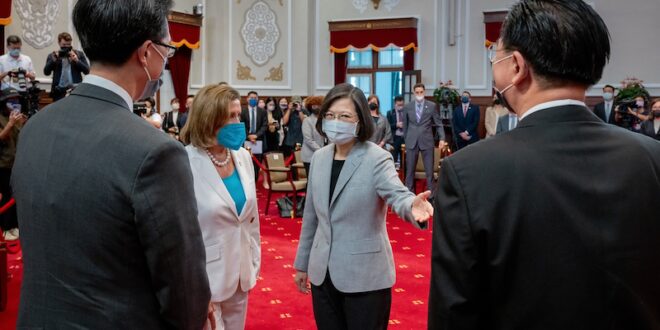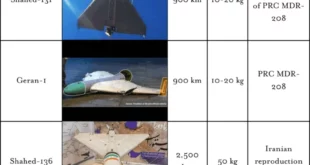Background
Businesses are rightly more concerned now over the outbreak of hostilities in the Taiwan Strait and its impact on physical security, assets/investments, and business continuity. Given the Chinese response to US Speaker of the House Nancy Pelosi’s 2-3 Aug 2022 visit to Taiwan, the risk of significant business disruption is perceived to have shifted up a notch from a low probability scenario to medium probability.
What has changed?
Prompted by the visit, China launched military exercises unprecedentedly close to Taiwan, as compared to the 1995-6 third Taiwan Strait crisis. China effectively closed six zones surrounding Taiwan from 4-7 Aug. Unlike in 1995-6, this is a step up as three of the exercise zones fall within Taiwan’s territorial waters, and all the zones fall on Taiwan’s side of the median line. China also launched ballistic missiles into multiple exercise zones, and some of these missiles overflew Taiwan, another unprecedented move. These Chinese military exercises signalled China’s ability to impose a blockade on Taiwan and also featured anti-access area denial capabilities to ward off intervening foreign forces.
China also demonstrated the full range of its options short of war – from economic leverage to cyber-attacks. China temporarily halted over 100 Taiwanese brands of food imports and also stopped selling sand to Taiwan. China did not go as far as to stop other types of Taiwanese imports like electronics, but started strictly enforcing its customs regulations stipulating that products with Taiwanese-made content had to be labelled as made in “Taiwan, China” or “Chinese Taipei.” Chinese state-sponsored groups also engaged in low level cyberattacks on government and commercial targets in Taiwan.
Impact on businesses and supply chains
China’s actions have had a limited impact on maritime shipping and air traffic in and around Taiwan. China restricted commercial flights that passed through danger areas, but as far as media reporting indicated, this was only for the four day (4-7 Aug) duration of the first round of military exercises. Some commercial shipping had also been affected. Transit traffic (such as large LNG vessels) through shipping routes close to Taiwan had been rerouted to avoid the exercise areas, and cargo ships also had to seek longer alternative access routes.
No major impact on supply chains had been observed. An AmCham survey of 126 US companies in Taiwan reported in mid-August indicated that only a handful of these companies experienced supply chain delays. This was probably due to limited duration of the closure of maritime and air zones, and the fact that Pelosi’s potential visit was widely speculated by the media, which provided early warning and probably allowed businesses to make adjustments to prepare for disruptions.
Nonetheless, China’s actions have had a demonstrative impact of how disruptive an actual blockade would be. This would have alarmed businesses concerned about operational risks and supply chain disruptions. Zone 2 of the exercise area, which was located north of Taiwan, was proximate to the port of Taipei and the city’s main airports. Zone 6 was just off the coast from Taiwan’s southern port of Kaoshiung, a major gateway for vessels picking up Taiwanese semiconductor chips and where state refiner CPC Corp makes petrochemicals to supply manufacturers globally. During the exercise period, maritime shipping steered clear of this large area (zone 6) out of caution and called on other Taiwanese ports instead.
What does this mean?
Most analysts have pointed out that the developments surrounding Pelosi’s visit and its aftermath represent a new normal of more mini Taiwan crises. China probably intended to use its response to normalise its military activity around Taiwan. Chinese state media quoted a commentator who said that the PLA will henceforth conduct regular drills on Taiwan’s side of the median line. Going forward, China will need to respond forcefully to US and Taiwanese provocations, which have grown increasingly bold. Pelosi’s Beijing-defying visit has now paved the way and encouraged more of such unofficial visits, including by US congressional delegations eager to profile themselves ahead of the US mid-term elections. For example, a second congressional delegation arrived in Taiwan on 15 Aug, barely two weeks after Pelosi’s delegation left. This prompted the PLA Eastern Theatre Command to announce a continuation of its joint exercises around Taiwan.
We should expect a higher state of US-China tensions over Taiwan, given the strategic importance of the Taiwan question to US-China relations and the escalatory dynamics surrounding this perennial flashpoint. As recent developments have shown, the US and Taiwan have become much bolder in pushing the boundaries of the grey area around the One China Policy, and in response, China’s warning moves (though calibrated and short of provoking a conflict) have become much more forceful. Monitoring should focus on identifying developments which have the potential to trigger misperception and action-reactionary spirals amongst the three players – China, Taiwan, and the US.
For those worried about the US and China sleepwalking into World War III, the risk of conflict has indeed increased but is by no means a high probability outcome. Neither is the US spoiling for a fight nor is China set on a costly warpath toward national rejuvenation. Conflict is not in the long-term interest of both major powers, and there have been signs of restraint on both sides. China’s longer-term gameplan still remains peaceful reunification with Taiwan under a one country two systems model, although trends in Taiwanese public opinion remains a major obstacle. China’s position was clearly spelled out in its third white paper in three decades, released promptly on 10 Aug after days of military posturing. Similar to the previous two white papers, China emphasised that use of force would be a last resort, although it did not rule this out if their redlines were crossed. Furthermore, any military invasion would come at a significant cost to China. China cannot invade Taiwan without seriously setting back not only its economy but also its own technological development, since Taiwan produces the vast majority of advanced chips and is also integral to global semiconductor supply chains which China is still heavily reliant on for imported chips.
 Eurasia Press & News
Eurasia Press & News



